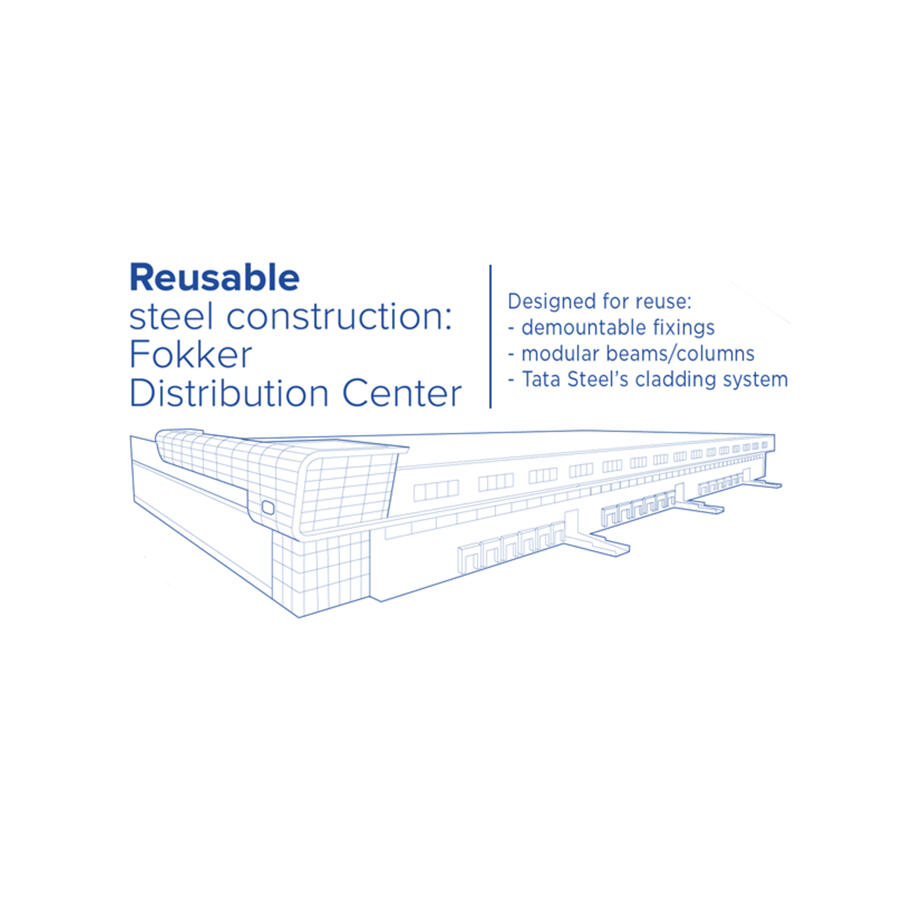
How data can support component reuse
Reducing resource consumption and environmental impact associated with production processes means moving away from the linear economy and embracing the circular economy. Steel is already one of the most circular materials there is: nearly all steel is recycled, and it is infinitely recyclable.
Not only that, but steel is also durable, so steel building components can be used on a project for a long time, and then reused on another project, before they need to be recycled. Encouraging the reuse of products and components further minimises resource consumption and encourages a whole life view of construction.
The refurbishment and reuse of components, however, cannot truly happen without the right data to support it. If a cladding panel has its coating renewed, or a roof cassette has its solar PV replaced, there needs to be a record of it so that, in the future, others know what the component was in the first place, and what has been done to change it.
When it comes to reusing components, having information available about demountability will be critical. Without a document that details disassembly, nobody will know how to remove a component in order that it can be successfully transferred to another site.
As well as enabling reuse, this data gathering will be able to support better recycling processes too. The ‘quality’ of steel changes over time; its chemical composition alters as it goes through multiple recycling processes and becomes mixed with other steel that has been used for different purposes. If data shows that steel is ‘clean’ steel that has not become mixed in this way, better sifting can be done to allow that steel to be processed together and produce a ‘better’ recycled material.
Materials passports can provide transparency about a product’s complete life cycle
In order to make the transition to a more efficient, interlinked and circular construction industry, it’s necessary to move away from generic product data and embrace the availability of data for product instances.
This starts with the product or component’s manufacture – what might be termed its ‘birth certificate’. Rather than data about the generic product range it came from, the available information needs to make clear the specific configuration and performance characteristics.
How and when was it made? What was the environmental impact of its manufacture, and is there an EPD available? How was the product put together, and how was it installed on the finished building? And, as we discussed above, how can it be taken apart again?
This information is useful because it reflects the specific component rather than the generic product range, and is the starting point for the creation of a digital twin.
The next stage is to make use of available technologies and capture in-use data using sensors. This could be measuring the thermal transmittance of a component to see if and how its performance changes over time, to understanding the degradation of a cladding panel’s coating due to UV exposure.
Tata Steel has undertaken several proof-of-concepts and is currently working on a full product identification platform to allow for tracing throughout the life cycle. The aim is to generate a complete materials passport based on trusted data that is linked across the complete supply chain - from production and manufacture, through installation, use and maintenance, to the end of the design life and the potential for reuse or recycling.
Tata Steel’s track record in digital platforms and tools
While Tata Steel continues to develop new platforms like materials passports and product identification, we have existing platforms that are available to designers and specifiers to assist in meeting sustainability requirements.
Our unrivalled technical support helps to achieve efficient designs by providing specification creation, helping to size hot-finished hollow sections in accordance with the original ‘Blue Book’, and offering our Platinum Plus system guarantee.
Across the construction industry, the use of 3D CAD has been widely proven to improve productivity and efficiency, and reduce waste. Tata Steel has supported and enabled this shift by developing digital tools like the COMBINED platform, where users can quickly and easily configure cladding system build-ups to help them assess the most efficient way to meet a project’s performance requirements. We have sought to build trust in the platform by ensuring that the data that is made available is maintained and updated – principles that we are continuing to apply in the development of our new platforms.
EN-Construction-Contact-Sustainability
Contact Sustainability











































































































































































